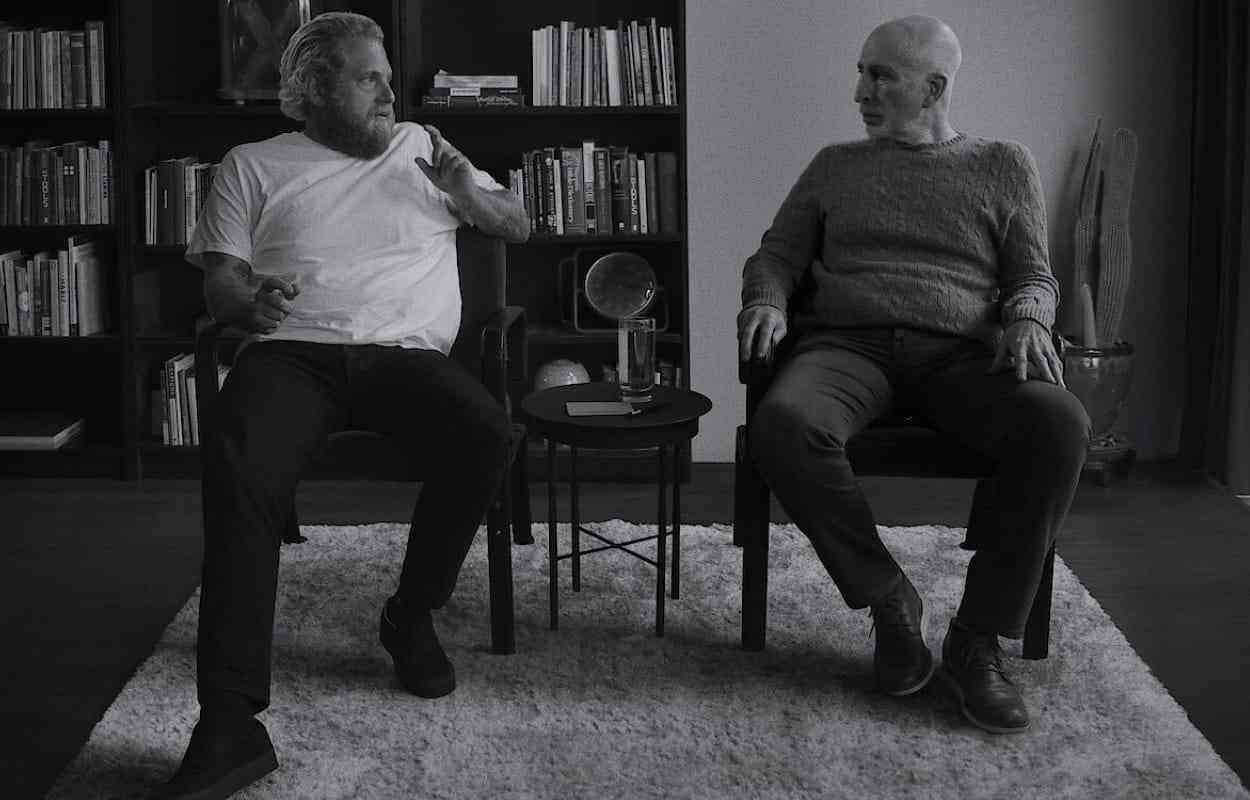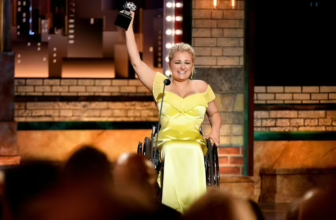It’s not often that one gets a fly-on-the-wall view of what happens in the therapy room. For a myriad of reasons — the least of which would be HIPAA and most of which would be the stigma associated with going to therapy — access to real-life therapist-client interactions is few and far between. It is for this reason that I was intrigued to watch the new Netflix documentary “Stutz” by Oscar-nominated actor and comedian Jonah Hill. While you’d expect there to be some lighthearted repartee based purely on Hill’s filmography, I was more impressed with his willingness to be both vulnerable and candid about his ongoing battle with depression.
The documentary itself is titled after psychiatrist Phil Stutz, Jonah’s own therapist who he has been seeing for over five years. At the beginning of the documentary, Hill states that the reason he wanted to make this film is to demystify therapy and to present the teachings of a person he deeply respects and cares about to the general public in hopes that they might help them as much as they have helped him. What ensues is a far more unusual and enigmatic look into what therapy involves.
To be sure, what occurs inside the therapy room is often intangible and difficult to articulate to anyone else. A therapist and their client not only develop a distinct way of interacting with one another based upon mutual esteem and a sense of safety, the specific modality and tools used to help the client vary from person to person depending upon their therapeutic goals. This is no less true for the relationship between Stutz and Hill, who appear to be at ease around one another and share a quick-witted banter that often relies on some good-natured ribbing, inside jokes, and the liberal use of profanity.
The Tools in “Stutz”
Stutz considers himself a teacher and his methodology involves a slightly unorthodox approach of writing what he calls his “tools” on little note cards that his clients can take with them as both a reminder of the tool and a means of anchoring the connection between himself and his clients. It’s a rather clever idea and one that isn’t wholly without some precedent. Many therapists will offer their clients small items, or tokens if you will, to help anchor them when they are feeling emotionally dysregulated or otherwise need to feel safe outside of the therapy room.
The tools themselves are interesting from an outsider's perspective. While I found some of them to be utilitarian — such as the concept of “The Shadow” or part of yourself that you want to hide from the world — others were definitely a bit woo-woo for my personal taste. That doesn’t render them uninteresting or useless, it just reflects my personal bias in terms of what has and has not worked for me on my own therapeutic journey.
What I found most intriguing about these tools was what they revealed about Stutz the man and his own life experiences. Indeed, many of the ideas he works with in his therapeutic model are ones that in some way have given him a means of making sense of his own life. Again, this isn’t uncommon as many therapists draw upon their personal histories to determine what kind of therapist they want to become and which modalities and techniques they opt to incorporate into their practices.
How “Stutz” Upends the “Blank Slate” Expectation for Therapists
The parts of this documentary that were most interesting to me were the times when the tables were turned, so to speak, and Hill became the one asking his own therapist about his personal life. Stutz is extremely open in disclosing very personal aspects of his life from the death of his little brother when he was a child to becoming his parents' therapist after his brother's death. He recounts the ways in which his childhood essentially set the stage for him to become a therapist and made him extremely in tune with the feelings and energy of others. Stutz also goes into great detail about his Parkinson’s disease diagnosis and the challenges of living with the disease both from a visibility perspective and from a relational perspective. His candor is refreshing and it really humanizes him, something that in my personal opinion is lacking quite often in the therapeutic relationship.
For a very long time, clinicians have been instructed to be a kind of blank slate when conducting sessions with their clients. They are not supposed to disclose any personal information, react to what their clients are telling them, or otherwise become in any way intimately involved with their client. This documentary very much turns this model of practicing therapy on its head and I suspect some clinicians watching it will find it uncomfortable or challenging to their deeply held beliefs about what is and is not appropriate ethically to share with their clients.
As for Hill and Stutz, this intimacy and sharing appear to work really well for them. The self-disclosure that Stutz has enables Hill to tap into not only subjects but feelings he had previously avoided, like the sudden death of his own brother and his long history of being bullied as a child for being overweight. As Hill says toward the end of the movie, “I used to think that the people I look up to are absolved of the problems that I have… There’s something beautiful about seeing your vulnerability for me that dissects that there will never be anyone who has it all figured out.” This is a particularly powerful revelation that destroys the illusion of some kind of power differential between client and therapist, something that I myself have wrestled with in a previously toxic therapeutic relationship with a therapist who leveraged her authority over me.
Lessons on Family Therapy
Bringing a relative or third party into a therapy session isn’t all that unusual. In this case, Jonah Hill brings his mom into a session with Stutz to discuss the ways in which her behavior contributed to his low self-esteem. He tells her that her reinforcement of the fact that she felt he was overweight as a child and subsequently taking him to a doctor to be treated for it left him feeling like he is bad and doesn’t look “correct” for the world. It established his mother as an adversarial figure in his life and made him feel as though no female would ever accept him as he is. He makes it a point in this exchange to say he doesn’t blame her, he just wants to explain how he feels. He then allows her to respond with her own feelings about the situation.
The point of doing this kind of family therapy is to be able to express your feelings and needs in a safe space where there is a third party — namely the therapist — to help navigate the interaction in a respectful and meaningful way. It can only work, however, if both parties involved are ready to accept their role in the relationship and take responsibility for how they behaved. In other words, both parties have to have done some modicum of self-work. Clearly, Hill’s mother has, but having attempted a similar kind of intervention with my own mother, I can tell you it doesn’t always look as amicable and helpful as this moment did.
Making Jokes to Avoid Feelings
During an interview with Stutz about his Parkinson’s disease, Stutz begins joking about something to deflect what he is feeling and to change the subject. Hill calls him on it and says he knows what he’s doing and won’t allow him to do it. Avoiding emotions by inserting humor into a conversation can be an effective coping strategy, particularly in a traumatic situation. It can help mitigate the fight/flight response and enable one to live through something that otherwise would be overwhelming. However, if it is done too regularly in therapy, it can be a crutch. I know this because I do it. Sometimes a therapist — or even a loved one — has to call you on it and push you to tap into what’s really going on for you emotionally. That’s hard. It goes against every instinct to protect oneself. And yet it’s necessary.
Final Thoughts on “Stutz”
This is a long, slightly rambling documentary. For people that are endlessly curious about the therapy process, it’s a worthwhile watch. However, if you don’t have time to devote to the entire movie, the last 20 minutes of it are the most poignant. That’s where the meat of it is. It’s where big heavy subjects like grief and loss are tackled head-on through the lens of Hill’s fear of discussing Stutz’s Parkinson’s disease. He acknowledges that by discussing it he would have to admit how scared he is to lose Stutz. This leads to a long discussion about normalizing loss and trying to practice non-attachment. And yet…in those moments, there’s a palpable attachment between these two men who clearly share affection for one another.
At the end, Hill revises his assessment of why he made the movie. He states “I made this movie because I love Phil, because I love the life these tools allowed for me to have. And it doesn’t matter what people think about the movie. It just matters that we finished it together.” Stutz nods and notes that he feels closer to Hill because of doing this. Both say “I love you” to one another and the movie closes with yet another joke to dissipate the charge of that moment.
To me, this was a truly moving scene. I’d be lying if I hadn't said “I love you” to my own therapist. And I mean it. For many of us, our therapist is the first relationship in our lives that we have felt truly safe to be fully ourselves, yuck and all. That’s a monumental thing that cannot be underestimated. To pretend that a therapist and client shouldn’t or won’t develop warm feelings toward one another is illogical. It goes against what it means to be human.
Therapists aren’t superhuman. They have their flaws, their peccadillos, and emotions that filter into their work. This doesn’t make them a bad therapist. It makes them a good human who happens to perform therapy for a living. Being a therapist isn’t their identity, it’s what they do. And if they are successful at it, chances are it’s because they have been able to tap into the right balance of tools and humanity to create a dynamic of safety for the person sitting across the room from them to let go of their fears and allow themselves to be seen. And that’s a beautiful thing. If it does nothing else, this documentary sheds light on this, and I for one am here for it.
Chef, writer, advocate, furr mom and worlds biggest Céline Dion fan.







